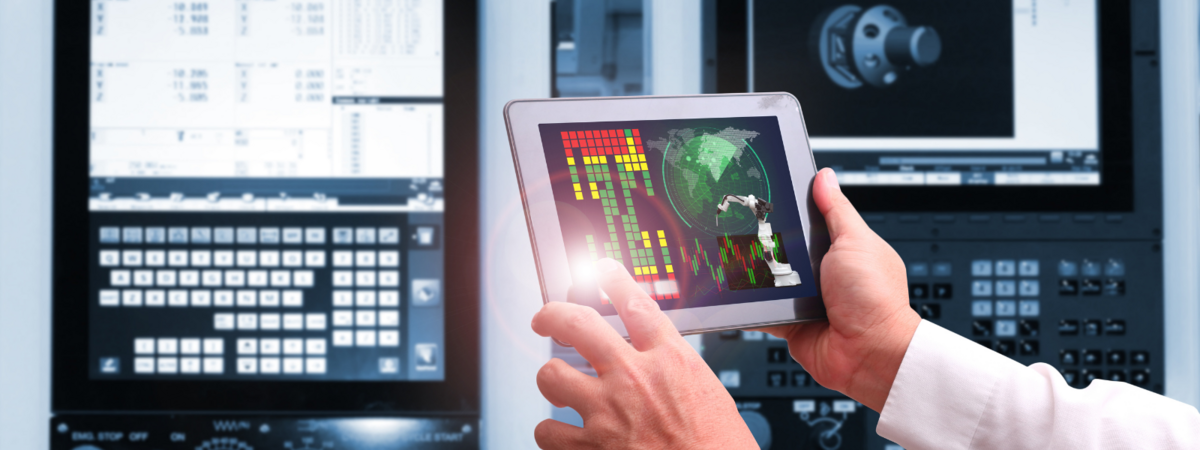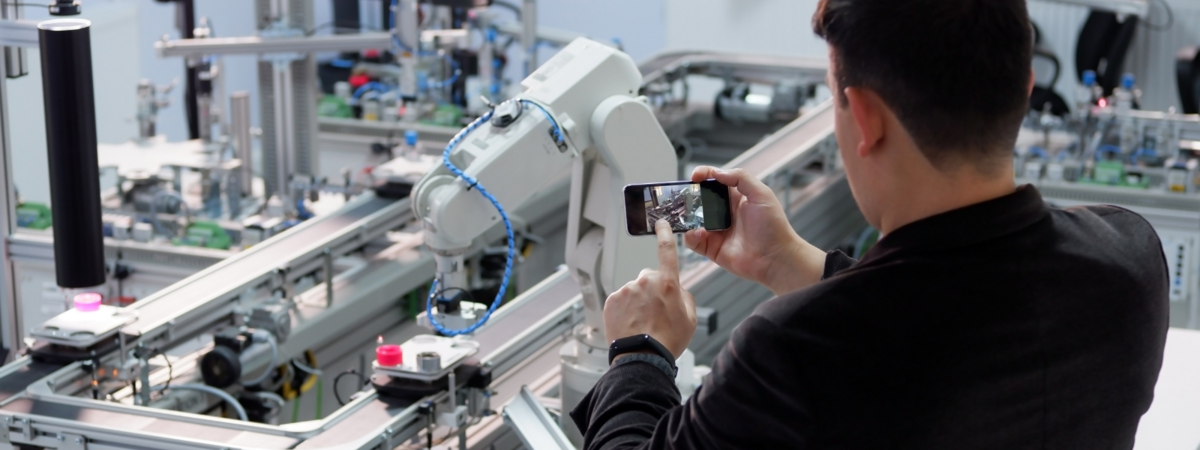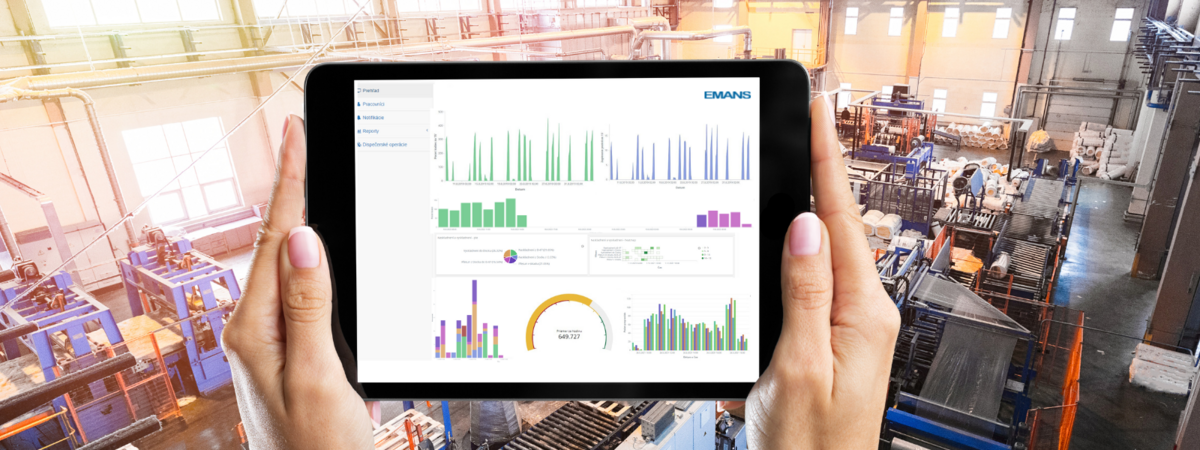5 Major Benefits of OEE in the Age of the Digital Revolution
2023-12-29
OEE has long been among the traditional tools for improving production. What advantages does Industry 4.0 bring in the era of the digital revolution? How can OEE help with digitization and automation of production?
As the world becomes more and more digitized, every industry and business feels the pressure to deploy new technologies and innovative work methods. The reason is simple: to stay competitive. The manufacturing and industrial sectors are not only different, but they are also leaders in experimenting with new technologies and procedures.
In order to remain operational in today's turbulent economy, manufacturing companies must work with digital transformation solutions. And OEE (Overall Equipment Effectiveness) is the gateway to digitization and automation of production processes.
WHAT IS OEE AND WHY IT IS NECESSARY FOR THE DIGITAL TRANSFORMATION OF OPERATIONS
OEE has been around for several decades. It was first developed by the Japanese car manufacturer Toyota in the 1960s. However, it was initially only used as an internal metric to track device performance. It was not until the 1990s that OEE began to be used as a tool to support operational improvements.
In 1993, John Edwards published a paper entitled "Using Total Equipment Effectiveness in Manufacturing Operations", which described how OEE can be used to identify and eliminate waste in manufacturing operations.
Overall Equipment Effectiveness (OEE) is a metric that measures the performance of manufacturing equipment to improve productivity and reduce operational costs. In recent years, technological advances have made it possible to collect and evaluate production data, which has increased the importance and overall usefulness of OEE also as a digital change tool.
OEE solutions measure the performance of production tools and equipment. By monitoring factors such as downtimes, retooling, and production cycle time, it creates a comprehensive view of the use of equipment in individual processes. And also their efficiency in individual production procedures. In addition, OEE enables a panoramic view of the efficiency of the entire production process as well as the overall performance of equipment in serial production.
On the basis of these analyses, it is possible to measure and optimize the tool set-up time. By reducing the time required for the changeover, the company can achieve shorter production cycles. And at the same time, to strengthen the agility of production and thereby deliver flawless products to the market faster.
The flexibility of production thus acquired shortens the company's reaction time to market changes and customer requirements. And it directly increases its competitiveness.

OEE IN THE ERA OF THE DIGITAL REVOLUTION OF INDUSTRY 4.0
Since 1993, the use of OEE has advanced significantly.
Thanks to technological advances, it is now possible to collect, analyze and evaluate large volumes of data from devices and processes in real-time. This has made OEE an even more powerful tool for supporting operational optimizations and developing manufacturing improvements.
Manufacturing companies can now tune production processes on the fly based on accurate and real-time data collected during individual production cycles.
The rise of Industry 4.0 has elevated OEE to a key parameter. The features brought by Industry 4.0, above all the personalization and agility of processes, can only be achieved if production operations run at maximum efficiency.

WHAT CHALLENGES ARE AWAITING COMPANIES WHEN DEPLOYING OEE FOR DIGITALIZATION
There are several challenges associated with using OEE to support digital transformation, including:
Collecting the right data
In order for businesses and operations to analyze OEE data to improve performance, they need to know how to collect it properly. If there is incorrect data collection or gaps in data collection, incomplete data can create a distorted view of operations and processes. This primarily results in not addressing the real causes of productivity inefficiency, reduced quality, or excessive wear and tear of equipment.
Data analysis
Once data is collected, it needs to be analyzed to identify areas that need improvement. This can be a problem if the data is not properly organized or if too much data is analyzed out of relevant context.
Implementation
Once improvements are identified, they need to be implemented in order for the changes to take effect. This can be a problem if changes are not properly planned or executed.
Hiring specialists
Businesses can hire experts who specialize in implementing OEE tools to collect and analyze production data to help them overcome the obstacles they face.
Investments in technology
Enterprises must properly plan investments in technologies for more effective monitoring of production data, analysis, and evaluation.
Planning
Manufacturing operations must plan the introduction of OEE tools and innovation in logical sequences. In this way, they avoid an overpriced implementation and can already start benefiting from partial OEE analyses during the initial stages.

WHAT ARE THE ADVANTAGES OF USING OEE IN THE DIGITALIZATION OF PRODUCTION
There are many benefits to using OEE to support digital transformation in manufacturing businesses.
First of all, this is the primary benefit, thanks to which OEE is still used in companies today, increasing the overall efficiency of the equipment. This primarily results in increasing the performance of equipment, their production potential, and the related reduction of operating costs.
In addition, using OEE to support digitalization can increase the agility of manufacturing processes. It can also help businesses increase customer satisfaction levels by delivering better quality products in shorter delivery times.
In addition, deploying OEE to support digital transformation helps to create a safer work environment for employees. Thanks to it, the probability of human error decreases. And that's also because production data is collected and analyzed automatically through intelligent algorithms.
The key benefits of OEE in digitizing production include:
1. Optimization of Operating Costs
By improving the efficient utilization of equipment, companies reduce production and operating costs.
2. Quality Improvement
By monitoring equipment performance in detail, operations identify quality problems more precisely. And at the same time, they can begin to solve them immediately and thus prevent the deterioration of the majority of products in the relevant production batch.
3. Increasing Production Throughput
By reducing downtime and increasing the speed of production, the overall production throughput is expanded.
4. Increased Quality of Decision-making in Production Management
By analyzing OEE data, managers can make better decisions based on precise and real production data.
5. Improvement of Technical Condition
Since OEE identifies deviations and anomalies in the technical condition, it helps with more targeted maintenance, which also results in extending the life of production equipment and tools.








